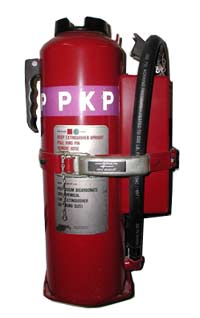 | |
| Names | |
|---|---|
| IUPAC name potassium hydrogencarbonate | |
| Other names potassium hydrogencarbonate, potassium acid carbonate | |
| Identifiers | |
3D model (JSmol) | |
| 4535309 | |
| ChEBI | |
| ChEMBL | |
| ChemSpider | |
| DrugBank | |
| ECHA InfoCard | 100.005.509 |
| EC Number |
|
| E number | E501(ii) (acidity regulators, ...) |
| KEGG | |
PubChem CID | |
| UNII | |
CompTox Dashboard (EPA) | |
| |
| |
| Properties | |
| KHCO3 | |
| Molar mass | 100.115 g/mol |
| Appearance | white crystals |
| Odor | odorless |
| Density | 2.17 g/cm3 |
| Melting point | 292 °C (558 °F; 565 K) (decomposes) |
| 22.4 g/100 mL (20 °C) [1] | |
| Solubility | practically insoluble in alcohol |
| Acidity (pKa) | 10.329 [2] 6.351 (carbonic acid) [2] |
| Thermochemistry | |
Std enthalpy of formation (ΔfH⦵298) | −963.2 kJ/mol |
| Pharmacology | |
| A12BA04 ( WHO ) | |
| Hazards [3] | |
| GHS labelling: | |
 | |
| Warning | |
| H315, H319, H335 | |
| P261, P264, P280, P302+P352, P304+P340, P305+P351+P338, P312, P332+P313, P362, P403+P233, P405 | |
| NFPA 704 (fire diamond) | |
| Flash point | Non-Flammable |
| Lethal dose or concentration (LD, LC): | |
LD50 (median dose) | > 2000 mg/kg (rat, oral) |
| Safety data sheet (SDS) | MSDS |
| Related compounds | |
Other anions | Potassium carbonate |
Other cations | Sodium bicarbonate Ammonium bicarbonate |
Related compounds | Potassium bisulfate Monopotassium phosphate Dipotassium phosphate |
Except where otherwise noted, data are given for materials in their standard state (at 25 °C [77 °F], 100 kPa). | |
Potassium bicarbonate (IUPAC name: potassium hydrogencarbonate, also known as potassium acid carbonate) is the inorganic compound with the chemical formula KHCO3. It is a white solid. [1]
Contents
- Production and reactivity
- Uses
- Food and drink
- Medical uses and health
- Fire extinguishers
- Agriculture
- History
- References
- External links

